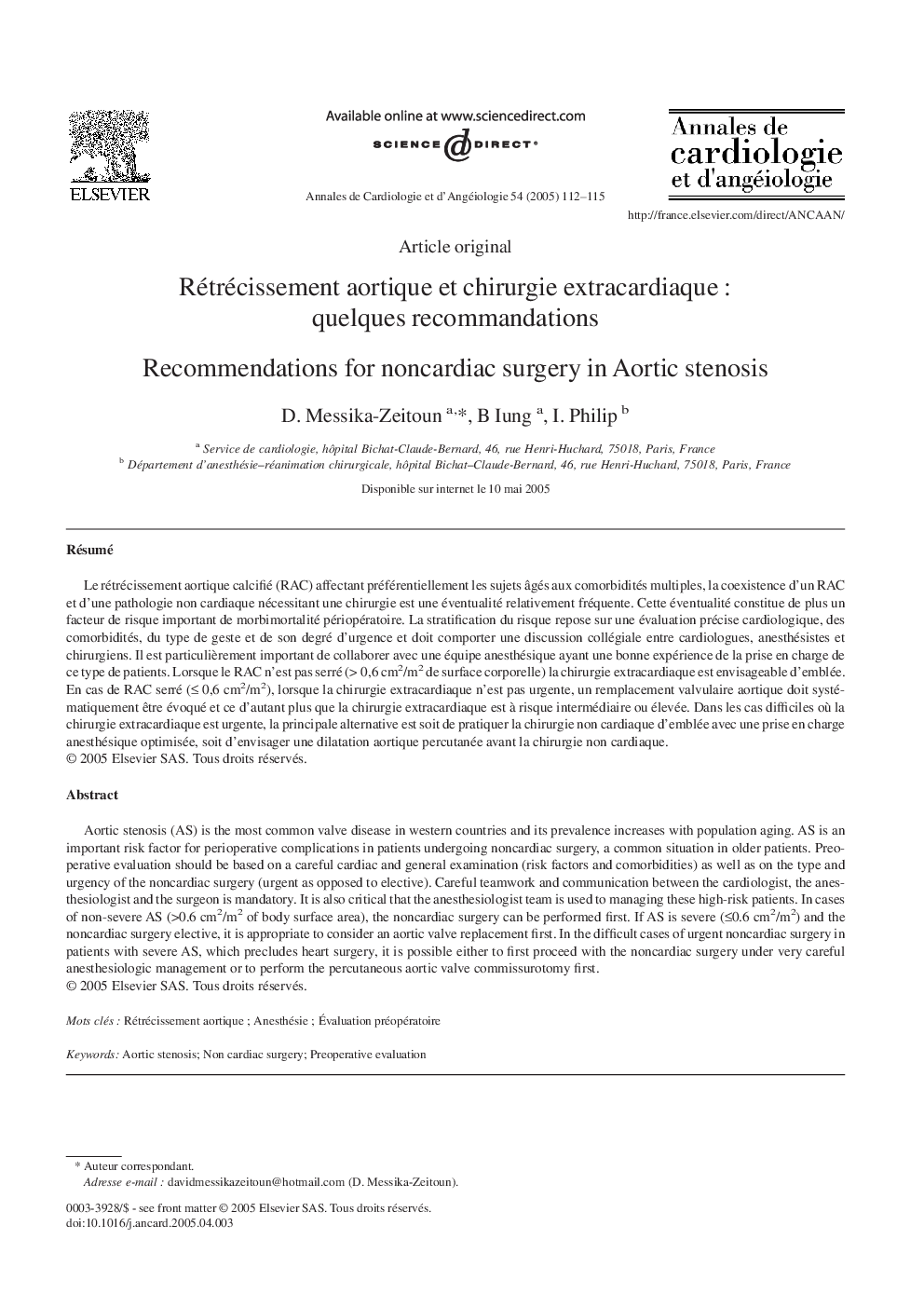| Article ID | Journal | Published Year | Pages | File Type |
|---|---|---|---|---|
| 9157355 | Annales de Cardiologie et d'Angéiologie | 2005 | 4 Pages |
Abstract
Aortic stenosis (AS) is the most common valve disease in western countries and its prevalence increases with population aging. AS is an important risk factor for perioperative complications in patients undergoing noncardiac surgery, a common situation in older patients. Preoperative evaluation should be based on a careful cardiac and general examination (risk factors and comorbidities) as well as on the type and urgency of the noncardiac surgery (urgent as opposed to elective). Careful teamwork and communication between the cardiologist, the anesthesiologist and the surgeon is mandatory. It is also critical that the anesthesiologist team is used to managing these high-risk patients. In cases of non-severe AS (>0.6 cm2/m2 of body surface area), the noncardiac surgery can be performed first. If AS is severe (â¤0.6 cm2/m2) and the noncardiac surgery elective, it is appropriate to consider an aortic valve replacement first. In the difficult cases of urgent noncardiac surgery in patients with severe AS, which precludes heart surgery, it is possible either to first proceed with the noncardiac surgery under very careful anesthesiologic management or to perform the percutaneous aortic valve commissurotomy first.
Keywords
Related Topics
Health Sciences
Medicine and Dentistry
Cardiology and Cardiovascular Medicine
Authors
D. Messika-Zeitoun, B Iung, I. Philip,
